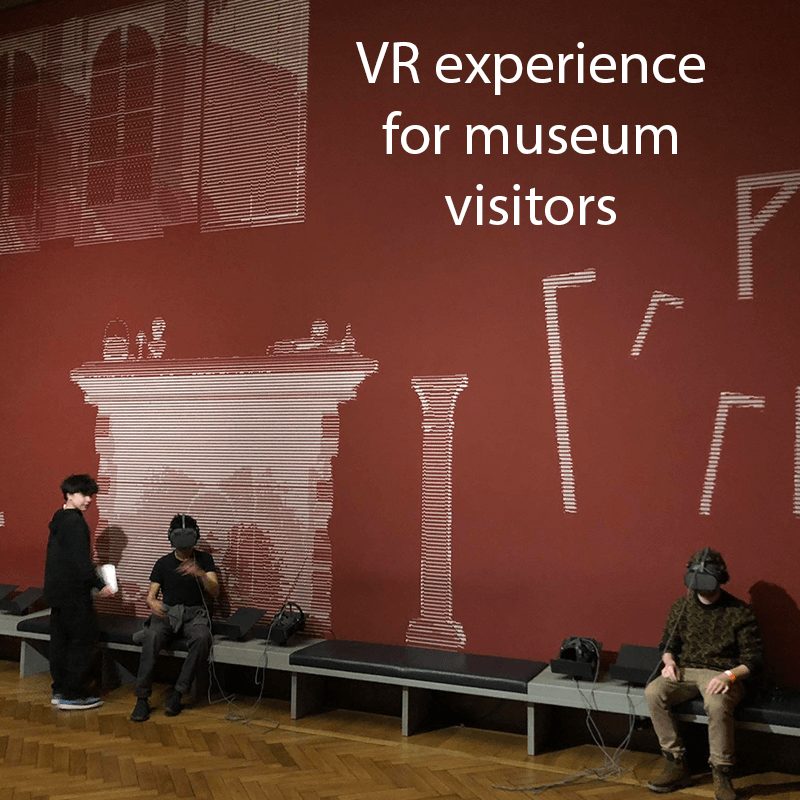Creating compelling interactive museum experiences
In today’s fast-paced world, where technology touches every part of our lives, museums face a unique challenge: how to keep visitors engaged and make art more accessible to everyone. That’s where AI comes in, and specifically, Lean Mean Learning Machine’s Talking Pictures project. We’re not just talking about a minor upgrade; we’re talking about a game-changer for museums. By allowing visitors to have conversations with art, we’re breaking down the barriers between the past and the present. This isn’t about replacing the traditional museum experience; it’s about enhancing it in a way that meets the expectations of a modern audience. As a decision-maker for your museum, it’s crucial to recognize the urgency of integrating AI into your exhibits. It’s not just a trend; it’s the future of museum engagement.
Talk to artwork
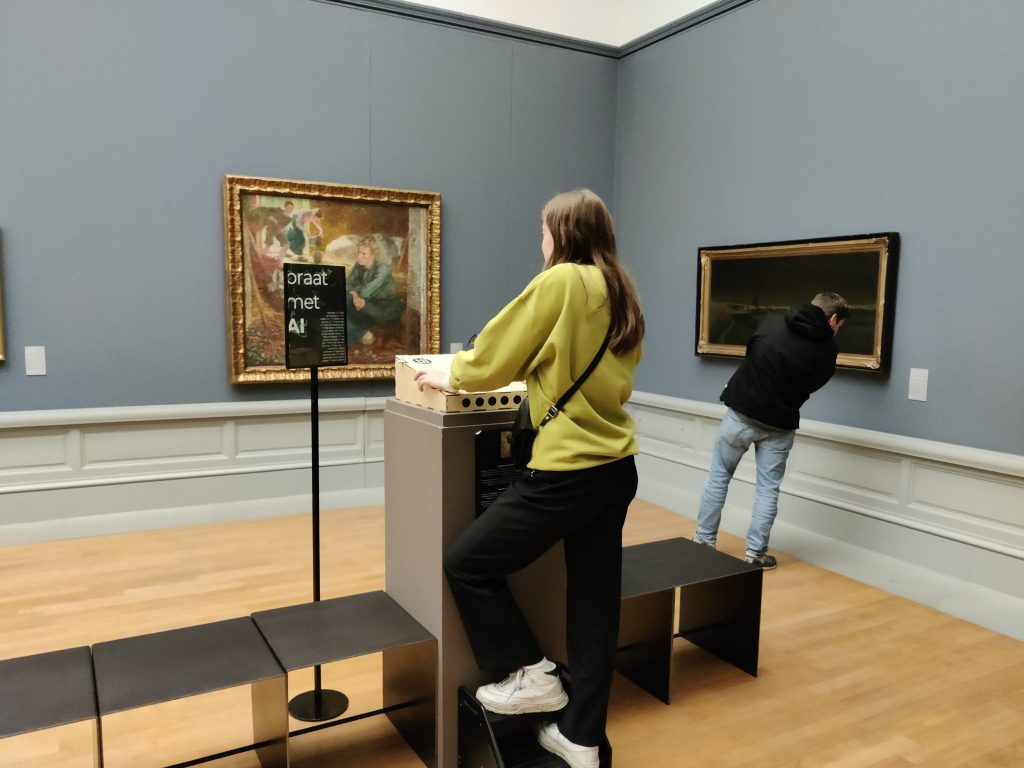
Photo: A visitor talking to “The Cattle Shed” by Jenny Montigny at Museum Of Fine Arts in Gent, Belgium.
This AI-powered installation invites visitors to engage in a dialogue with art, transforming the traditional museum visit into an interactive journey.
Imagine standing before a timeless piece of art and having the ability to converse with it. This isn’t science fiction; it’s a reality created by Talking Pictures. The installation includes a discreet, user-friendly interface positioned near the artwork, allowing visitors to ask questions and receive answers as if the painting itself were the storyteller.
Key Highlights of the Talking Pictures Experience:
Interactive Learning: Visitors of all ages can learn about the art piece’s history, the artist’s life, and the era it was created in through an engaging conversation.
Enhanced Accessibility: By providing information verbally, Talking Pictures opens up new avenues of accessibility for visitors who may have difficulties with traditional text-based information.
Personalized Experience: Each visitor can ask unique questions, allowing for a personalized interaction that caters to their specific curiosities and interests.
Modern Engagement: This AI interface meets the digital expectations of a contemporary audience, making art more relatable and engaging for the tech-savvy generation.
Innovative Storytelling: The ability to ‘talk’ to a painting adds a layer of narrative that is both educational and entertaining, enriching the visitor’s understanding and appreciation of the art.
Let’s talk!
If our project resonates with you and you see potential for a collaboration, we would 💙 to hear from you.
The Faceswap Feature
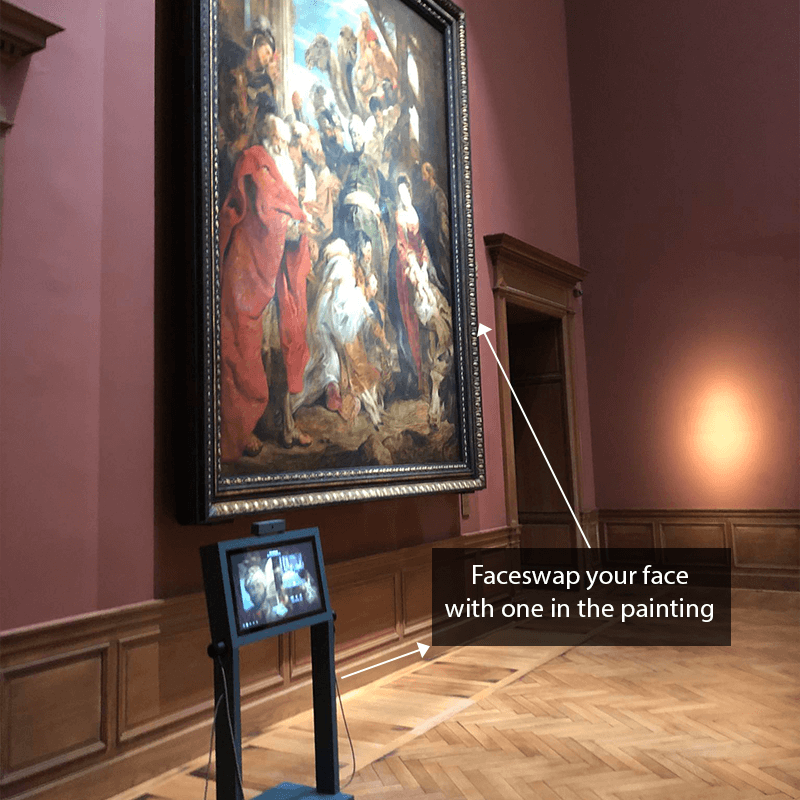
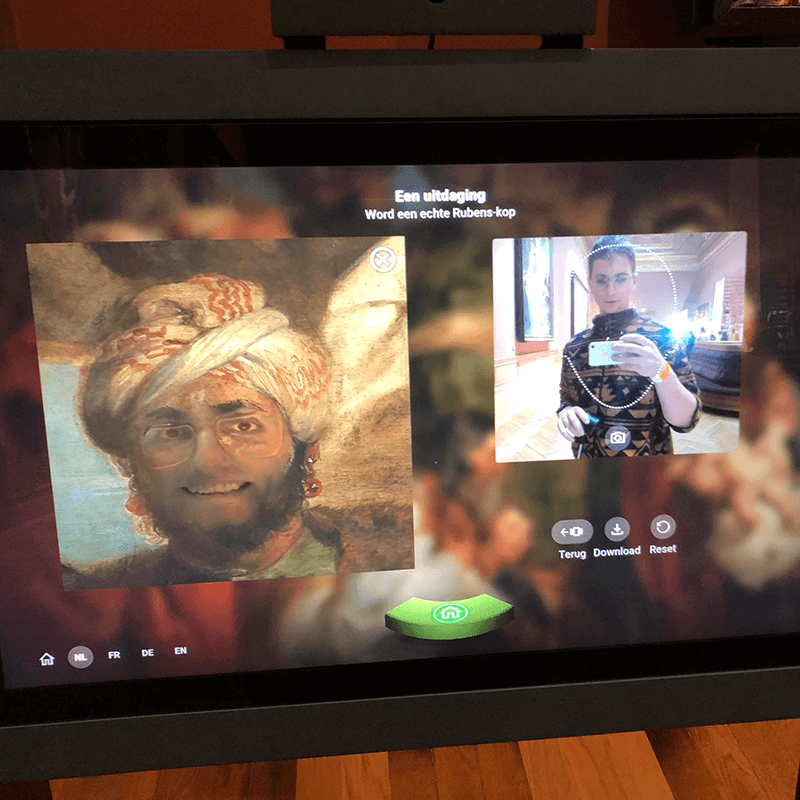
Photo: Faceswap installation available at the KMSKA in Antwerp, Belgium
Visitors can become one with the art by swapping their face with a character in the painting. This playful interaction is not just a photo opportunity; it’s a way to step into the scene, blurring the lines between observer and participant.
The Faceswap station is equipped with a camera and display. As visitors see their own expressions mingled with the artistic strokes of the past, the barrier between time and space momentarily dissolves…
Key Aspects of the Faceswap Interaction:
Personalized Souvenirs: Offers a unique take-home memory that is more intimate than a typical museum postcard or replica (not possible in the setup you see here).
Engagement Through Play: Encourages a playful interaction with art, making the museum experience fun and approachable for all ages.
Cultural Immersion: Allows visitors to ‘step into’ the artwork, fostering a deeper connection and understanding of the cultural and historical context.
Shared Experiences: Perfect for social media sharing, it can increase the museum’s visibility and attract a broader audience.
Educational Tool: Can be used as a springboard for discussions about the characters, clothing, and lifestyles of the time period represented in the painting.
Visitors can wear a headset and be instantly transported to a reimagined workshop of the painter. This immersive journey is not just about seeing; it’s about exploring an artist’s space, a blend of historical speculation and creative interpretation designed to delight and inform.
Whether it’s a whimsical artist’s rendition or a historically accurate reconstruction, the VR experience offers a unique, hands-on way to connect with the creative process. The emphasis on fun doesn’t detract from the educational value; instead, it enhances it by making learning an active, rather than passive, experience.
Insights into the VR Workshop Experience:
Immersive Education: Visitors can interact with the environment, gaining insights into artistic techniques and historical art-making processes.
Engagement: This high-tech approach caters to different learning styles, particularly active learners who benefit from doing rather than just viewing or listening.
Innovation: Showcases the museum’s commitment to cutting-edge technology, positioning it as a forward-thinking institution.
Creative Exploration: Encourages visitors to explore their own creativity by virtually ‘stepping into the shoes’ of great artists.
Maintenance Considerations: While offering a dynamic experience, VR technology requires ongoing maintenance and updates to ensure a seamless visitor experience.
Live AI restoration
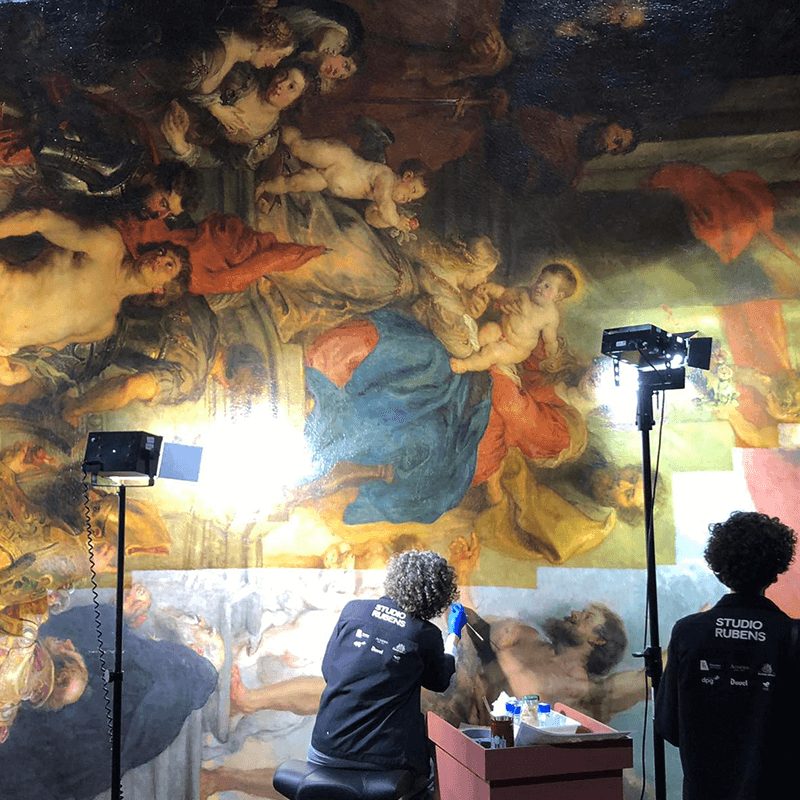
Photo: live restoration process of a painting of Pieter Paul Rubens where the varnish is removed.
Live art restoration sessions captivate visitors, offering a rare glimpse into the meticulous care and expertise that goes into preserving our cultural heritage. As art conservators delicately remove layers of varnish, the vibrancy and details of the original masterpiece are slowly revealed. However, the necessity for concentration and the sensitivity of the work often means that conservators cannot engage with the public during the process.
This is where the ingenuity of Lean Mean Learning Machine’s Talking Pictures installation becomes invaluable. By providing a digital point of contact, visitors can satisfy their curiosity without interrupting the restorers’ crucial work.
Enhancing the Live Restoration Experience with AI:
Educational Engagement: Visitors can learn about the restoration process in real-time, understanding the science and art behind each meticulous step.
Non-Intrusive Inquiry: The AI system allows for an uninterrupted workflow for conservators while providing answers to the visitors’ questions.
Global Context: Mention of similar restoration projects, like the MSK’s Lamb of God in Belgium, situates the experience within an international context.
Preservation Awareness: Highlights the importance of art preservation, educating the public on the challenges and techniques involved.
Inspirational Insight: Offers inspiration and appreciation for the painstaking efforts that go into maintaining the legacy of historical artworks.
The integration of AI into the live restoration viewing experience at museums not only enriches the visitor’s understanding but also respects the conservators’ need for a focused work environment. Lean Mean Learning Machine’s innovative solutions are setting new standards in the museum field, enhancing the way we interact with and appreciate the delicate art of restoration.
Let’s talk!
If our project resonates with you and you see potential for a collaboration, we would 💙 to hear from you.
